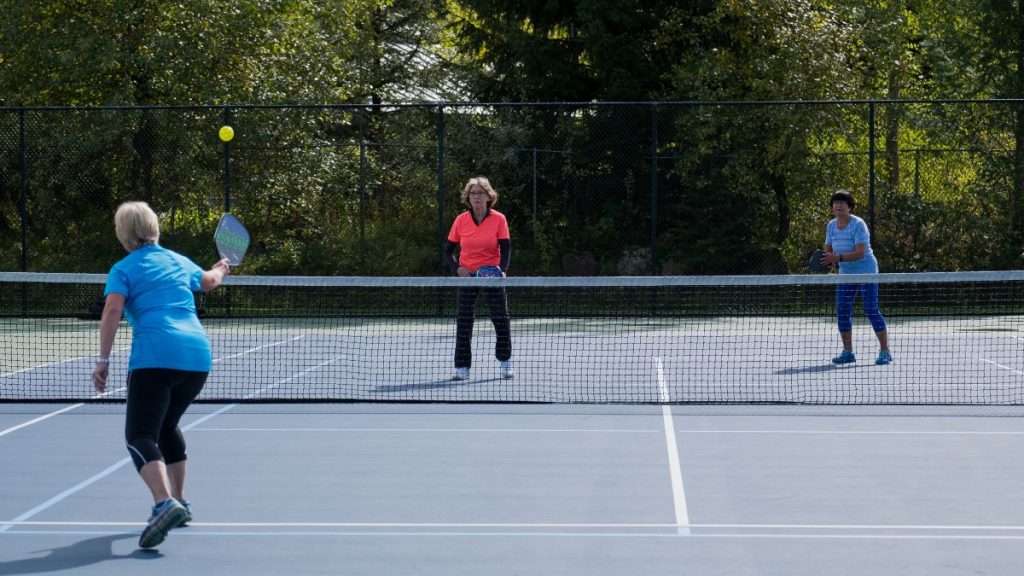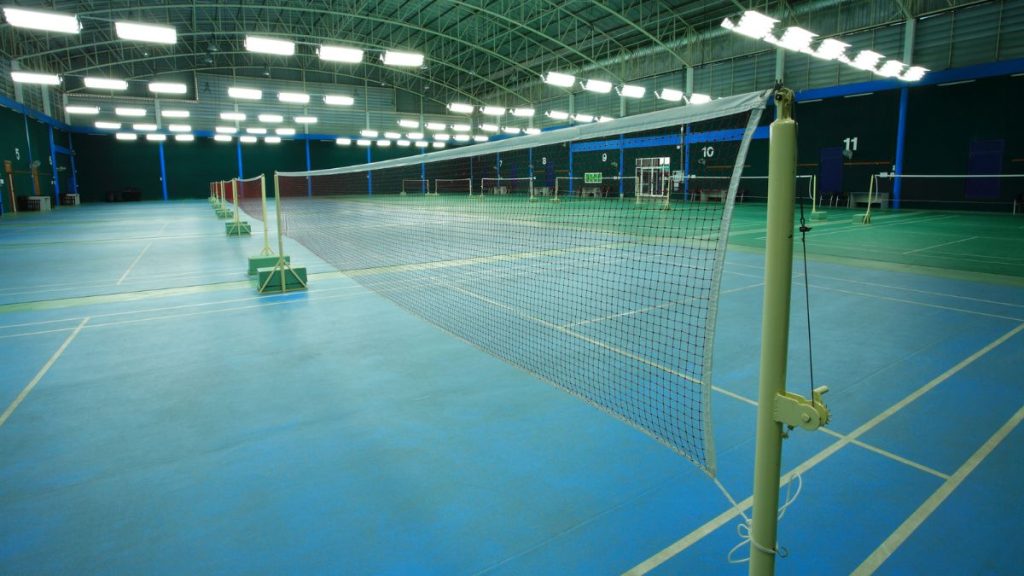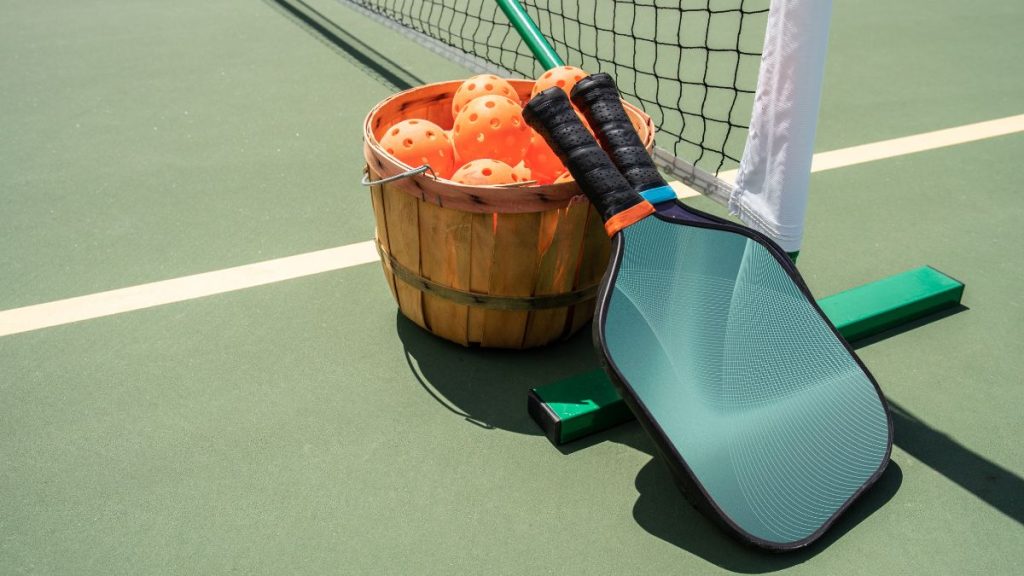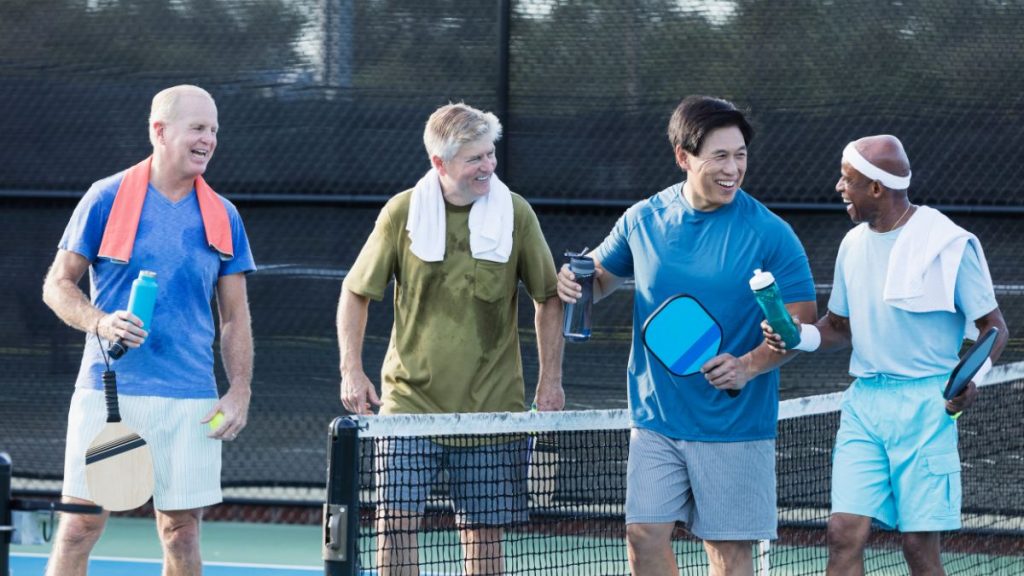Older adults initially prefer a prevalent game worldwide, pickleball, since it does not cause too much stress on their joints. But now, this game is preferred by people of all ages. Even professional badminton and tennis players would love playing pickleball during their free time since it can help them improve their game.
As pickleball grows more and more, from being a neighborhood game to a worldwide sensation, its techniques and strategies will probably change. Here, we are going to explore one of its strategies, which is switching. Are you wondering when to switch sides in pickleball?
In a pickleball game, players can switch sides after their first game. Once the team acquires six points, players can switch sides in case a third game is necessary. During the consolation events, players are also permitted to switch sides. This occurs when there is only one game that includes 15 points.
Keep on reading to know more about switching to pickleball. Aside from switching sides, we will also explore switching hands while playing the game.
What is Switching in Pickleball?
A pickleball tournament is composed of two to three games of 11 points. The game ends when a team or one of the players has reached 11 points or has won the match by at least two points. If there is a tie between the two teams, then one of the players will continue playing the game until one wins by two scores. When the third game ends, players are allowed to switch their sides.
Switching is another alternative to stacking. Rather than having the two players start on one side, each player is allowed to start on their typical side, and later on, they will switch sides after doing a serve.
Contrary to stacking, there is an element of surprise in switching. Instead of “showing your hand” to the opposing team, you are staying in your traditional position during the start of the game and will switch quickly after doing the serve. Be sure to inform your partner if you want to switch or stay before the point by doing a quick signal.
One of the benefits of switching is to use a “fake.” Whether or not you and your partner do not want to make a switch, you can keep the opposing team guessing by pretending to switch and then returning to your original positions.
Can You Switch Positions in Pickleball?
Traditionally, partners are allowed to switch sides for every point scored in pickleball doubles. This means that the player who started on the right-hand side of the court will move to the left-hand side once a point is obtained. When the succeeding point is scored, the two players will switch sides, which will continue as the game continues.
Eventually, the player who started on the right-hand side of the court should be positioned on the right-hand side every time the score is even, and every time the score is odd, the player should be positioned on the left-hand side of the court. Conversely, the player who started on the left-hand side of the court should also be positioned on the left-hand side every time there is an even score, and every time the score is odd, the player should be positioned on the right-hand side.
However, these two players do not need to remain in those positions! When it comes to the serving team, the players can switch sides after serving. On the other hand, the receiving team is allowed to switch sides when the return of serve is done. Based on the rules of pickleball, this can be done by using the strategy known as stacking.
How Do You Determine Which Side to Serve from in Pickleball?
In pickleball, serving will greatly depend on the score. If the current score is even, then the server will start serving from the right-hand side. On the other hand, if the current score is odd, the service will be done on the left-hand side. If the server wins a volley, the players will switch sides depending on the score. They will start serving again until such time that they lose.
At the start of the game, serving actually starts from the right-hand side of the court; during this time, the score is still 0. Serving should be done from behind the baseline. The server is not allowed to cross the service line until such time that the ball is already in play.
Can You Change Hands When Playing Pickleball?
Since pickleball is a combination of tennis, badminton, and ping pong, its rules and regulations can sometimes be too confusing. That is why most people ask, “Can you change hands when playing pickleball?” Although this sport is relatively easy, some things can confuse beginners. This includes whether it is okay to change hands during the game.
Switching hands during a pickleball game is fine. Most often, players do this before hitting a shot. Although changing hands is sometimes recommended, this is not preferable in some cases. Playing pickleball is fun as long as you know its techniques and rules.
When you try out different paddles, you first notice the grip. The texture and the size of the grip matter a lot. These factors can influence your first impression of a paddle. When choosing a paddle, you are more concerned about how it feels on your hands. This only makes sense since the grip is the only part you touch.
Although most players want to keep their paddle in one hand when hitting some shots, others want to switch hands during the game, which is ok. However, keep in mind that there are instances wherein switching hands is not recommended. For example, experienced pickleball players know that switching hands when playing the game is quite difficult, especially during a fast kitchen volley exchange.
Additionally, it could cause the opposing team to score a point since you were not quick enough while doing the switch, and your opponent saw it coming. That is why beginners should only change hands for those balls that bounce. However, when hitting backhand volleys, you must ensure that your paddle is placed in your strong hand. This is because most pickleball players are not as agile with their weak hands, making it more challenging to switch hands during a game.
That is why regardless of whether you are a first-time or experienced player, it is advisable that if you have a strong backhand or prefer to develop one, you should try to stick to it while playing the game. Nevertheless, if you think that you are not as fast and you do not have the mobility, or you do not feel comfortable playing with your backhand, then it is ideal that you should switch hands instead. You don’t want to make more mistakes when playing the game just because you keep on attempting that backhand.
Additionally, players recovering from a shoulder injury should use their other hand when playing for obvious reasons. But after they have recovered, it’s fine to switch hands during the game. But remember that this can be very challenging, especially during fast play in the kitchen.
What are the Advantages and Disadvantages of Switching Hands?
One of the common reasons for switching hands is reaching. But aside from this, there are also other advantages.
Advantages
- Most players, especially those who have not played tennis or other racket sports before, think that hitting shots using the weak hand feels more natural than the backhand.
- Sometimes using your backhand in striking a kitchen drop shot will require you to turn your head and body away from the net. As a result, your opponent could make some movements without being seen. As you turn your head to strike the ball, a clever opponent might quickly jump to the out-of-bounds area to hit your return ball. Using your weak hand in hitting shots, you can keep your body more aligned with the net while having a good visual of your opponent.
- Reaching faster and further can be easily done with our forehands. However, if a player lacks mobility, switching hands can give him more reach.
- Sometimes switching hands can confuse your opponents.
Disadvantages
- When switching hands, there are chances that you might drop your paddle. Having your paddle on the ground can make switching hands looks a little ridiculous.
- Switching hands might be difficult if you are in a fast kitchen volley exchange situation.
- Switching hands should only be considered for balls that bounce. However, the paddle should be kept in the strong hand for backhand volleys.
Conclusion
Knowing the rules of pickleball, such as when you switch sides in pickleball. Also, learning about the advantages and disadvantages of switching hands can help you play more effectively in this sport.




